Green Maintenance
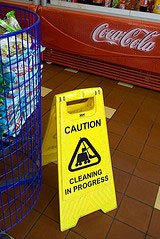
In addition to types of green flooring, there are products that can be used in conjunction with flooring that may possess green qualities. The most common are adhesives and cleaners.
There are further considerations than just the actual flooring that will be purchased. The installation method and products used should be taken into consideration as well as how the final product will be maintained.
Cleaners
Tips for Cleaners:
- Choose products with natural ingredients
- Consider homemade cleaners like vinegar, baking soda or mild dishwashing detergent
- Read labels thoroughly for ingredients
Maintaining your green living space:
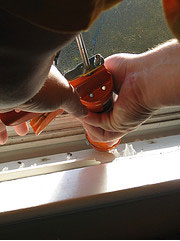
Keep caulked areas caulked. Every degree of temperature variance in a home can result in up to 10% addition to your heating and cooling expenses.
Check your doors. Energy can be lost through doors that are not spaced properly from the floor. If you are having flooring replaced or added, a professional installer can check your doors for proper install height.
Minimize use of space heaters. Spaces heaters are energy hogs and can generate more than 2 pounds of greenhouse gas per hour. These heaters don’t help your hardwood floors because the heaters increase the contraction of hardwood floors.
Purchase hardwood floors with the FSC Seal that are not clear cut or harvested in a sustainable fashion. There are only 4% of our own native, old growth forests still standing. The US is the worlds largest importer and consumer of timber woods and products.
Other Green Building Selections To Consider
Lighting and HVAC
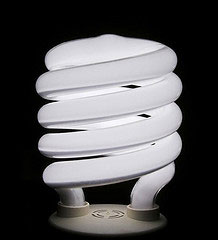
- Light bulbs – the easiest and smartest thing you can do to contribute is to change the type of light bulbs you use. A single CFL (Compact Fluorescent) replaces up to 10 traditional light bulbs and uses about a quarter of the energy. They will last 5-7 years! One CF light bulb saves 500 pounds of coal.
- Eco bulbs are usually brighter than the packaging says, so if you are looking for a 60 watt, you only need to buy a 40 watt.
- Properly sized and highly efficient furnaces
- Use air tight can lighting rather than traditional can lighting to prevent air from escaping around each unit
- Use HEPA (high efficiency particulate) air filters
- Use central vacuum systems because they are isolate and remove household floor pollutants
- Choose heating and cooling devices that are energy star approved
- Choose programmable thermostats to decrease energy use when not needed.
Paint and Wallpaper

- Use Low VOC (Volatile Organic Compounds) paints and primers
- Use paints, primers and finishes that are solvent free.
- Choose wallcoverings that are made with environmentally friendly fibers and water based inks.
- Choose pre-pasted wallcoverings that do not contain vinyl, PVC or VOC’s which can emit toxins into the air
- Breathable wallcoverings inhibit the growth of mold and mildew
Appliances
- Choose appliances with the Energy Star label – these use much less water and electricity and save you money in the long run
- Choose ovens that do not require pre-heating
- Choose cooktops that boil water faster to conserve cooking times
Cabinets and Countertops
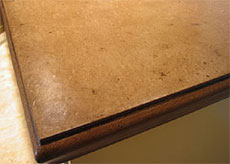
- Choose cabinets that are manufactured with low VOC (Volatile Organic Compounds) materials
- Choose countertops that are made from natural materials like granite, marble or quartz
- Choose countertops that are made from recycled materials
- Choose woods for cabinets that come from sustainable forests
Plumbing
- Low flow faucets, shower heads and toilets – they perform just as well while saving water in the process
- Electronic and hands free plumbing fixtures not only help promote better personal hygiene, but in the long run help you use less water
- Use solar hot water heaters, if possible
- Cut water heating costs with tankless water heaters
Interior Windows
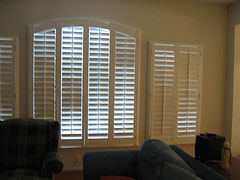
- Plantation shutters painted with Low VOC paints can help improve indoor air quality because they are less likely to collect dust and allergens
- Plantation shutters help conserve energy in the winter and the summer.
- Closed shutters, window shades, blinds, curtains and lined draperies contribute to energy savings by helping to insulate windows.
- Choose windows that are designed to be eco-friendly in order to reduce and prevent drafts
Exterior
- Choose well insulated windows and doors
- Choosing exterior finishes like brick and stucco that are long lasting and will not require maintenance and upkeep.
- Install solar panels wherever possible for free, clean and unlimited solar energy
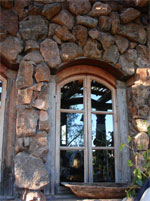
- Keep window tracks, door thresholds and weather stripping clean and intact.
- Use double paned windows the air between the glass provides additional insulation
End of life
- Ask yourself what will happen to the floor when you have finished
- Can the floor be recycled or reused
- Can the floor be donated
- Synthetic products don’t decay but can be recycled






